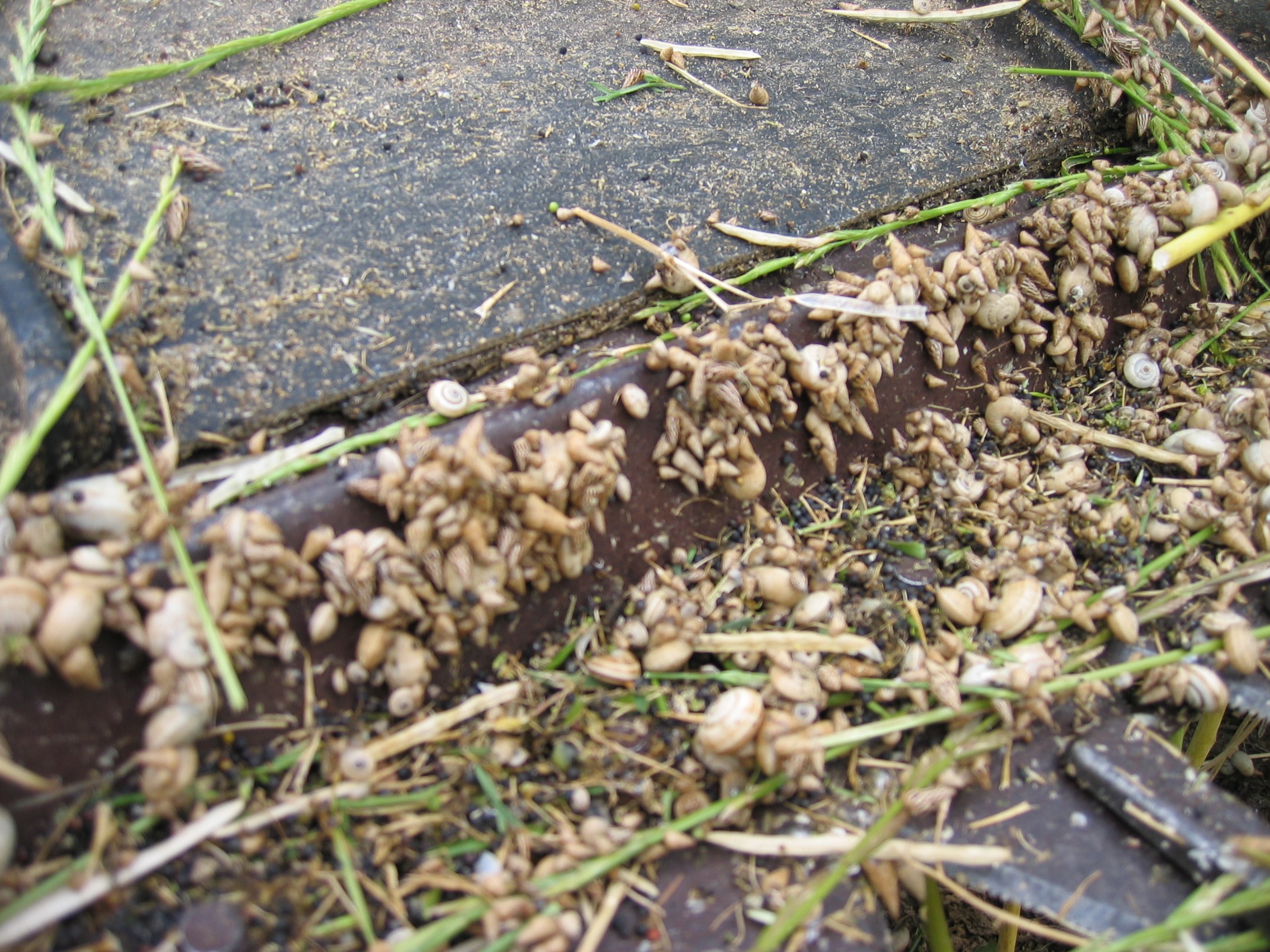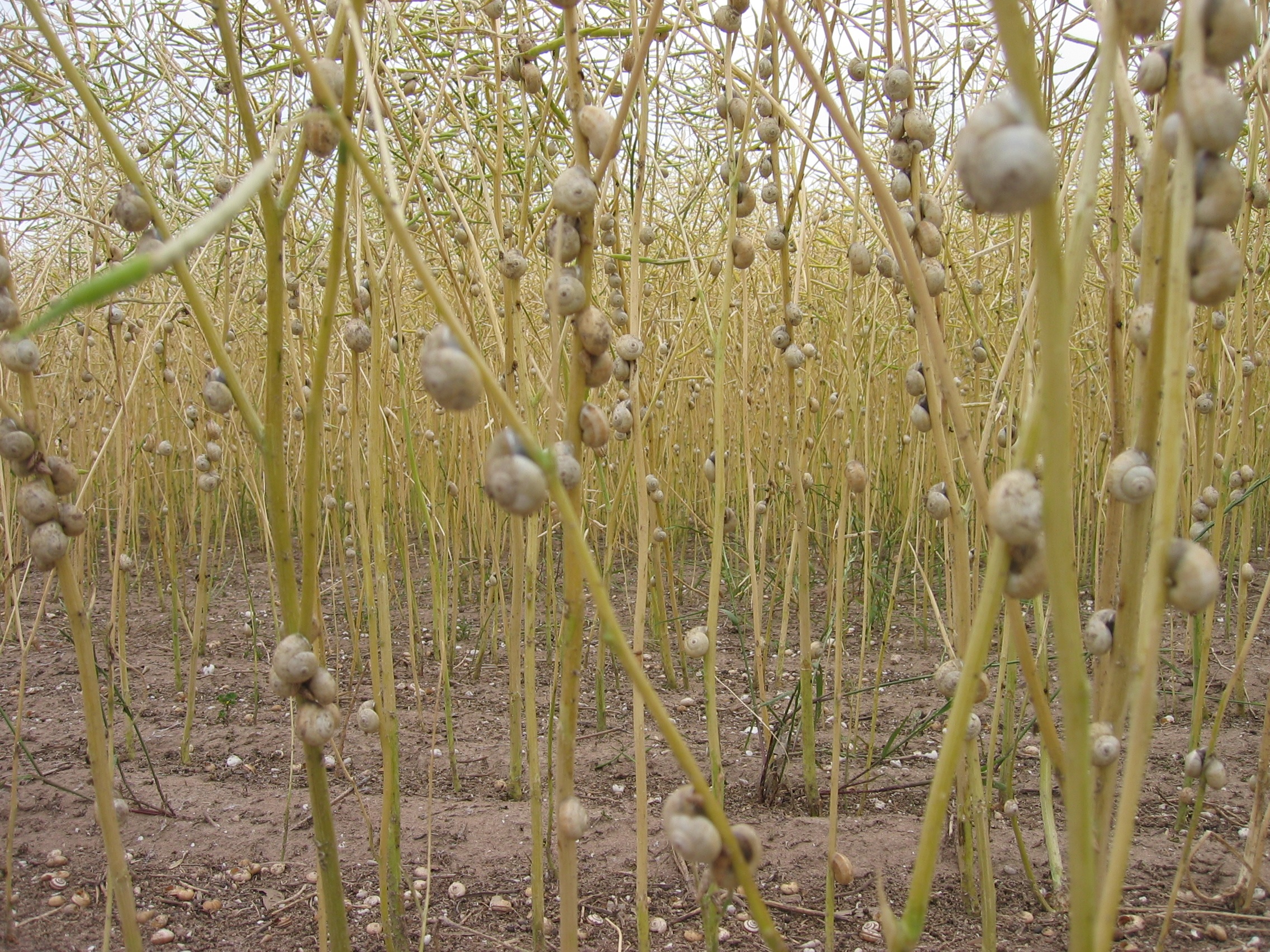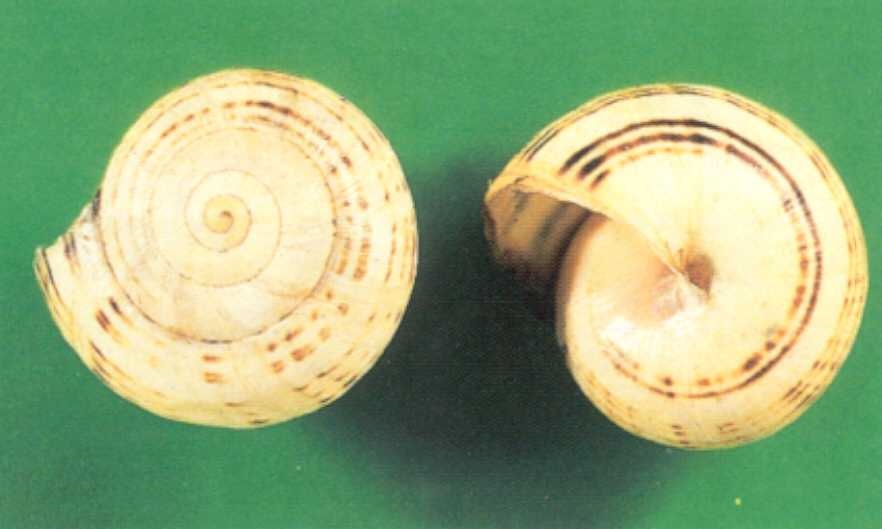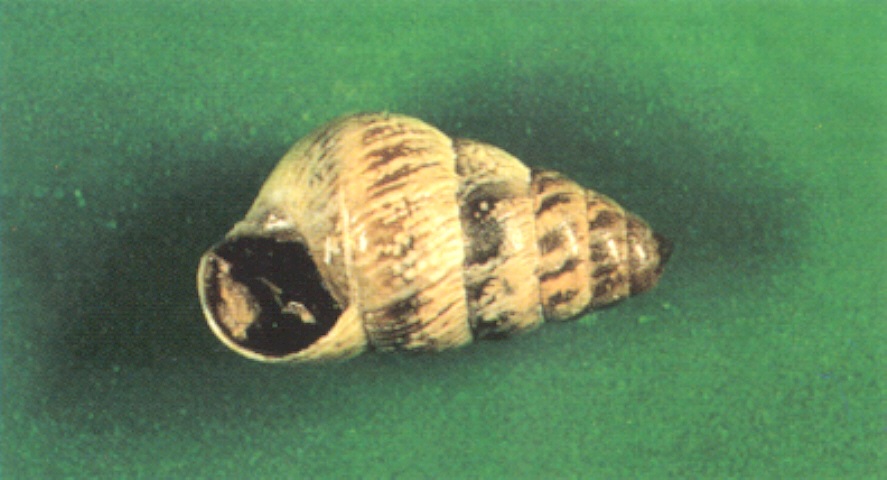Nailing snails - Practical prevention and control measures
Nailing snails - Practical prevention and control measures
Author: Graham Hayes | Date: 07 Feb 2013
Take home messages:
- It is very important to monitor snail activity and employ any control measures that can eradicate snails before eggs are laid
- We desperately need to break the life cycle of the snails
- This needs to be a collaborative effort between all farmers, councils and other community members.
My Background
I have lived and farmed all my life in the Warooka District. Snails have been here for nearly 100 years and I have the four species on my farm. I have been no till farming for 30 years and retaining all stubbles for approximately 25 years, particularly on our fragile soil type land, which is grey calcareous trace element deficient mallee. We also farm a range of other soils where burning stubble can usually occur without damage from erosion. We are seeing big benefits in retaining the stubble and no till methods. We continuously crop with no set rotations because of farm soil types and our number one enemy are “The Snails”. Wheat, barley, canola, lentils, peas and on some occasions beans and chick peas are sown on our farm.
Snails started to become an issue in 1989/1990. Barley crops were eaten off at emergence. We baited with Measurol® and saved the crop but had issues at harvest time with downgrading due to snails in the sample. The next year we tried burning very late in the season. This produced poor results because we had no control over eggs and juveniles.
Examples of Crop damage – canola & lentils
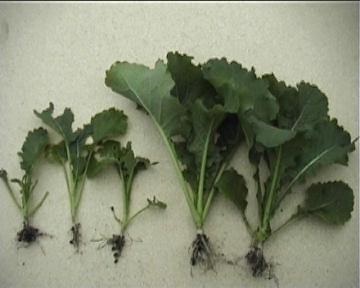
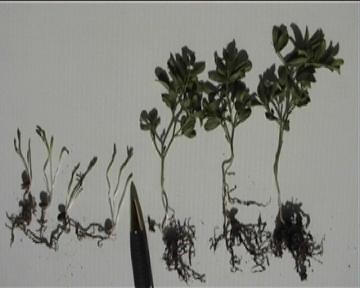
Control Methods
In desperation we began to employ numerous ways to control snails but without ever being able to break their life cycle. Burning, baiting, cabling, (using a 320metre cable between two vehicles on very hot days), rubber tyred rollers and flat steel rollers (3 section/12 metre/18ton) have all been employed. All of this effort is aimed at reducing snail numbers before egg laying which is critical in achieving low numbers at harvest. Baiting is only effective on larger snails e.g. more than 7mm in diameter or length. Juveniles are not physically capable of ingesting the active ingredient.
Major snail issues began in 1990/2000. Most of our grain was rejected because of the high number of snails with the grain. All grain had been harvested with header modifications (i.e. punch hole or mesh sieves and pusher bars), and also run through a cleaner. Despite this the grain still had: canola – 80 snails per ½ litre, barley – 80 snails per ½ litre and lentils – 30 snails per 200 grams.
Shmik Snail Crusher
Snails the same size as grains are the real problem. In 2000, we had 500 tonnes of Gairdnermalt barley harvested with modified sieves and pusher bars, but the grain still had 80 snails per ½ litre.
A professional seed cleaner came and was able to get a few tonne to meet receival standards but in doing so, removed 40% of the barley. ABB wanted to help by taking one load of the screenings.
In January 2001 the prototype Shmik Crusher arrived. We put the remainder of the grain through the crusher and delivered it as Malt number 1 with no snails. If snail numbers are only small the grain can be delivered straight off the rollers. If snail numbers are larger however, we do run the grain through a cleaner and remove the snail residue. We have used the machine on all grains including wheat, barley, lentils, beans and peas. We found poorer results with canola as it crushed the canola seed effectively losing 15% of the grain in the process.
Shmik rollers need to be carefully adjusted and monitored for best results. Depending on grain size, rollers are accurately adjusted using feeler gauges. For example, the adjustment for barley when the rollers are cold is 25,000/inch. After a few minutes, the rollers heat up and expand closing the gap. This can cause damage to the grain. Our Shmik roller now has a 32 HP engine and 4 rollers, and can handle 45 tonnes/hour.
For a few years ABB were concerned about the practice of crushing snails in grain. However, tests run by ABB proved that snail residue did not contaminate the grain. Malting tests and also germination tests were carried out proving that the quality was retained, if not enhanced.
At Pt. Giles, Viterra now have segregations for excess snails – up to 30 per ½ litre. E.g. malt barley is received as malt number 1 with 2 snails allowed. A fee applies for excess snails – this is charged per snail. Previously (since 1989) our malt barley was only received as Feed 4 because of the snail numbers. The limit was 20 snails per ½ Litre. Consequently, this has meant in some years a loss of up to $80 per tonne.
Inclined Belt Cleaner
An Inclined Belt Cleaner has also been developed by Michael Richards and Rob Higgins at Minlaton. The machine is designed to remove conical snails which are the same size as canola seed. The last two years have been very bad for snails on our farm, but because we have concentrated on controlling snails before seeding, we have not had to rely on the Inclined Belt to deliver our canola. We have been able to scalp out all of the conical snails using a 2mm slot screen.
Snails collected on windrower and infestation of canola
Current Research Funded by GRDC
Parasitic Fly – Dr Geoff Baker (CSIRO) and Dennis Hopkins (Department of Agriculture) began research and collecting a parasitic fly of the conical snail from France. The fly was quarantined in Adelaide at Waite until its release in 2000 on my farm. It has survived on our farm, but without a great success rate. The reason for this is that our snails do not appeal to French flies. The aim now is to determine the region in Europe our snails originated from and then match them with a parasitic fly.
Nematode – Dr. Gavin Ash and his team at Charles Sturt University, Wagga Wagga have been using snails from my farm for over 3 years to develop nematodes which are found naturally in Australian soils. These nematodes can parasite snails and slugs. Field trials in October 2011 were encouraging. Trials were done in May 2012 with no results as yet. Further trials are planned with 5 new nematodes selected due to their ability to handle dryer soil conditions.
Perlka – Low leaching nitrogen, calcium cynamide fertilizer was developed in 1895 and claims to control snails, slugs and their eggs. Preliminary trials are currently being monitored by SARDI in a pasture with high snail numbers and a canola crop.
Biochemical Blockers - Dr Scott Cummins, a researcher from the University of Queensland, is using “next-generation sequencing” to identify species-specific snail genes that make pheromones or that direct pheromone biosynthesis and reproductive function. Once the genes are identified, biochemical blockers can be developed.
Collated Data from Research
Yorke Peninsula Alkaline Soils Group was formed and a major effort was put into snail research funded by SAGIT and GRDC from year 2000 until June 2005 when funding stopped.
The following is data from some of the research. YPASG had a large input into writing the manual and the DVD “Bash ‘Em, Burn ‘Em, Bait ‘Em”. Twelve years on and all of the information in this manual and DVD is still very helpful and I highly recommend them to you. They are currently being revised and updated.
Mediterranean snail species that are pests of crops in Southern Australia
Common White Snail
White Italian Snail
Conical Snail
Small pointed Conical
Principles of Snail Management
Knowing snail types and understanding their behaviour are key factors in effective snail management.
- Use an integrated approach to snail management and aim to reduce snail numbers prior to egg laying
- Monitor live snail numbers per square meter before and after snail treatments
- Place special emphasis on lowering snail populations before sowing crops which are prone to snail damage (canola) and crops which favor rapid snail population increases (canola, peas)
- Snails love lime soils, brassica plants, shelter and moist cool conditions
- Lentils are an excellent option to assist in lowering snail populations
- Lentil crops have a low open canopy during their early growth, which provides little protection for snails when they are breeding
- There are several efficient methods available to clean snails from lentil grain
- The lentil stubble after harvest is short and sparse providing and opportunity to achieve high snail mortality from summer stubble treatments
- Desiccation and Weed Wipers reduce weeds and opportunities for snails to survive over summer
Life Cycle
Snails become active with autumn showers. They become sexually mature after 2 weeks of active feeding and commence mating. During mating, snails can be found together in pairs with the soles of their feet joined.
After another 2 weeks snails begin egg laying. During this period snails insert part of their foot in the ground and lay 20 to 80 eggs in a cluster in the soil. All snails have the ability to lay eggs, snails only have to mate once to continue egg laying for the season. Snails may produce up to 8 egg clusters per season.
Juvenile snails emerge during moist conditions, often hatching two weeks after egg laying. Juveniles continue to grow during winter and spring. A large number of adult snails die towards the end of winter. Older snails are more bleached and paler in colour.
Moist autumns and long moist springs extend snail activity leading to a greater build up in snail numbers. As temperatures rise during spring snails begin to climb crops and posts and start aestivation (hibernation)
Over summer, snails survive the hot dry conditions by sealing off their shell and elevating themselves from high soil temperatures. The opening of their shell is covered with several layers of thick mucus. By dislodging snails from their resting places in temperatures above 35 degrees C, snails are forced to break the seal at the opening of their shell, lay down moisture and expend energy to move. This practice can cause high snail mortality and place surviving snails under stress, lowering their energy reserves. Summer showers and overnight moisture assist snails in replenishing their energy reserves.
Summary of Key Points for Effective Snail Management
- Baiting practices; to ensure maximum snail mortality
- Snails must be active; cool moist conditions for 5-7 days following bail application.
- Even distribution of bait with sufficient baiting points per sq metre (5 kilos of Meta bait is 11 bait pellets per sq m)
- Kill summer and brassica weeds which may hold snails from bait, lowering snail kill.
- Finish baiting 8 weeks before harvest, due to risk of bait contaminating the produce.
- Baiting is very effective when snail numbers are below 80 per square meter.
- Aim to use summer stubble treatments to lower snail numbers prior to baiting.
- Once snail numbers exceed 80 per square meter, multiple applications of bait may be needed, and a bait rate of 10kg per ha may be applied.
- Do not heap baits, clean up spilt baits and avoid off target damage.
- Store baits away from children and animals.
- Summer Stubble Treatments; guidelines
- Cabling is the most effective treatment when there are surface stones, etc
- Summer Stubble Treatments are most effective when temperatures are above 35 C
- Repeating stubble treatments will increase snail mortality
- Overnight moisture may reduce snail mortality
- Summer weeds may reduce snail mortality
- Heavy mulch on the soil surface will reduce soil temperatures and reduce snail mortality
- Burning; issues
- Consider the erosion risk
- Summer weeds and stones etc will reduce the snail kill
- Protect burnt and snail free areas from re invasion by snails
- Periodic burning should reduce snail numbers sufficiently unless snail numbers are very high
- When using periodic burning, defer burning until before a crop highly susceptible to snail damage e.g. Canola
Key Factors Affecting Snail behavior:
latest research results
Vanessa Cavagnaro’s recent analysis of Dr Geoff Baker’s long term snail population data has shown a strong correlation between the value of southern oscillation index and the rate of population build up of white snails. Plot trial work carried out by Vanessa also shows snails tend to congregate around manure in actively growing grazed pastures. This tends to explain why snail numbers are often higher on areas where livestock frequently camp.
Initial early trial work by Bill Long has shown under certain conditions, tillage can reduce the number of juvenile snails. It is thought that cultivation reduces the percentage of snail eggs that hatch into juvenile snails. This could be through physical disturbance of snail egg clusters or by lowering soil moisture which effects the viability of snail eggs and juveniles. Burying adult snails has no effect on snail survival.
Summer Stubble Management:
Low cost, low erosion risk
Stubble management has proven very effective in reducing snail numbers. The majority of results have shown that round snail numbers can be reduced by 50 – 90% and conical snails by 80%. It is important to note that conical snails reside in the soil and under rocks over summer. Therefore, only the surface-living component of the population can be killed through stubble management.
Table 1: Level of snail control with stubble management in 2001
|
Date of pre/post counts |
Crop type |
White snails /m2 (% reduction) |
Conical snails /m2 (% reduction) |
Paddock Operation |
||
|
Pre |
Post |
Pre |
Post |
|||
|
1/2 - 2/3 |
barley stubble |
205 |
58 (72) |
208 |
2 (99) |
Cabling twice |
|
2/2 - 5/2 |
canola stubble |
299 |
7 (97) |
- |
- |
Tyre Roller 39°C |
|
6/2 - 15/3 |
canola stubble |
198 |
59 (70) |
- |
- |
Cabling |
|
16/2 - 28/2 |
durum stubble |
54 |
13 (76) |
- |
- |
TR twice, 34° and 38°C |
|
1/3 - 10/3 |
wheat stubble |
41 |
25 (39) |
- |
- |
Tyre Roller |
Summer stubble management is an effective strategy in situations with high snail densities.
Cabling was introduced as a form of summer snail control by farmers in the Upper SE. SA farmers had pleasing results in 2001 with the level of snail control they achieved from cabling. Cabling allows large areas to be covered very quickly (120 ha/h with a 300 m cable in comparison to 10 ha/h with an 8 m roller). Because of the speed of the operation, cabling can be performed in the hottest hours of the day to maximise snail mortality.
In stony paddocks cabling is often more effective than rolling, as stones are upturned during cabling, exposing snails to high summer temperatures. This is of particular benefit in areas with high densities of conical snails.
In regions with cooler summer temperatures repeated cabling of paddocks was reported to be effective,as snails were repeatedly dislodged and forced to move over the hot ground, thereby suffering dehydration.
Evening moisture allows the snail to re hydrate lowering snail mortality from summer stubble treatments.
In cereal crops cabling appears more effective in standing stubble than in slashed stubbles. The higher mulch levels on the soil surface in slashed stubbles lowers soil temperatures reducing snail mortality from cabling. Generally summer stubble treatments are cost effective, environmentally friendly and effective in reducing snail numbers before mating and egg laying.
If iron stone is present there is a fire risk with cabling. A strategy to reduce the fire risk may be to thread the cable through poly pipe.
Burning:
Low cost, high erosion risk
Burning is an effective method of snail control when used as part of an integrated snail control program. The increased risk of soil erosion in burnt paddocks needs to be considered when assessing burning as a snail control option. Unless numbers are extremely high (> 250 per sq metre) you may only have to use burning once every 3 or 4 years to achieve improved snail control. Burning is less effective against conical snails which can shelter below ground and also under rocks. Summer weeds reduce the level of snail mortality obtained from burning.
Early Baiting:
Protecting the benefits of stubble management
The benefits from stubble management can be lost when surviving juveniles and adult snails are not baited, or when "snail-free" areas are not protected against invasion of snails from the perimeter. Early baiting can be used to reduce snail numbers and for strategic protection of "snail free" areas.
Snails must be active to achieve high mortality from baiting, as snails come across the bait as a result of random movement.
Cool moist conditions for 5-7 days after baiting will ensure maximum snail mortality from baiting. It is important that the number of live snails is checked 5-7 days after snail activity, as surviving snails will be attracted to the cluster of dead snails, making it difficult to determine baiting effectiveness.
In 2001 farmers successfully used early baiting to kill snails before they became sexually mature and began breeding. Many farmers managed to bring numbers down to 2 - 10 snails/m2 before the main breeding activity began. Snails larger than 10 mm respond particularly well to early baiting. These large snails would be the first to become sexually mature and begin egg laying. By controlling large snails in autumn, egg laying can be substantially reduced.
Table 2: Level of snail control with early baiting in 2001
|
Date of pre/post counts |
Crop type |
White snails /m2 (% reduction) |
Conical snails /m2 (% reduction) |
Bait |
||
|
Pre |
Post |
Pre |
Post |
|||
|
14/4 - 1/5 |
Barley |
69 |
2 (97) |
- |
- |
10 kg Meta |
|
22/4 - 30/4 |
Barley |
45 |
5 (88) |
- |
- |
5 kg Slugger |
|
1/5 - 9/5 |
Wheat |
24 |
3 (88) |
- |
- |
5kg Pestmaster |
|
7/5 - 22 /5 |
Peas |
30 |
2 (91) |
- |
- |
5 kg Pestmaster |
|
9/5 - 22/5 |
Lentil |
16 |
2 (88) |
- |
- |
5 kg green bait |
|
11/5 - 25/5 |
Oaten hay |
45 |
10 (79) |
- |
- |
5 kg Meta |
|
16/5 - 28/5 |
Barley |
15 |
5 (67) |
16 |
9 (47) |
5 kg Pestmaster |
A field trial was conducted to assess the impact of early versus late baiting on white snails in a canola crop on the Yorke Peninsula. All baiting was done with 5kg/ha Meta. Three snail size groups were recorded (smaller 5 mm = hatchlings, 5 – 10 mm = juveniles and larger 10 mm = juvenile to adult) to provide information on snail population development. The initial snail density on the trial site was 30 to 50 white snails/m2 in May. Table 3 summarises the snail densities after different baiting applications.
Table 3. Comparison of snail numbers per m2 before and after different baiting applications
| Timing of baiting application | Snail density / m2 in Sept |
|---|---|
| No snail control | 365 / m2 |
| September baiting | 289 / m2 |
| May and June baiting | 140 / m2 |
| May, June and Sept baiting | 14 / m2 |
A late winter baiting application will take out the larger snails in the population (>7mm), but not the juveniles (<7mm). This gives growers even more reason to concentrate snail control efforts early in the season.
Successful snail control in autumn will reduce the number of adult snails before they start breeding; this reduces the number of small snails at harvest. All evidence suggests that if no control methods are put into practise by end of autumn, it may be difficult to get adequate control in the winter. If a snail population has predominantly <7mm sized snails present, the economics of baiting may be doubtful.
Growers can now use both the numbers of snails present per m2, and the size of the groups of snails present, to assist them with making baiting decisions. When adult snails are present in the population (snails larger than 7mm), the following bait rates can be used as a guide:
- more than 20 snails per m2, apply bait at 5kg per ha
- more than 80 snails per m2, apply bait at 10kg per ha
- Finish baiting 8 weeks before harvest, due to the risk of bait contaminating the produce.
Baiting trials involving conical snails are currently under way so that we can gain further insight into successful baiting strategies for conical snails.
Border Hygiene:
Reducing favourable snail habitats
Fence lines, water channels, non arable areas and roadsides provide snails with an ideal habitat for breeding so good border hygiene is essential. Spraying weeds in these areas will reduce the opportunity for snails to survive over summer and breed through the winter. Snail invasion from borders is a common problem, in 2002 many farmers tried baiting at 10kg per ha along fence lines and baiting the rest of the paddock at 5kg per ha. The results have improved snail control over the whole paddock. A mix of snail sizes indicates snail are breeding in that area rather than invading from borders.
GRDC Snail Harvester Project Outcomes
Sieves:commonly used sizes
| Crop Type | Top Sieve | Bottom Sieve |
|---|---|---|
| Barley | 9.5 hex | 7.9 round hole |
| Wheat | 9.5 hex | 710 Expandamet |
| Canola | 4.7 round | 220 raised profile small sieve expandamet range |
Top sieves listed above are all punch hole sieves; eg 9.5 mm hexagonal hole, 4.7 mm round hole
Stripper Front:
50% Snail Reduction + > 25% increase in harvest capacity
Bean Options for Reducing Snail Contamination
- Harvest as early as Possible
- Dangling Belt Pusher Bar
- Windrow during damp evening, harvest next day before snails invade rows
- Reverse clean; sieves under grain augers
- Reduce Grain Elevator Speed (smaller sprocket) to reduce snail pulp.
- Concave Breakers to reduce roping & rotor rumble, allowing earlier harvest
Performance of Pusher Bars in Barley:
Lodged Crop Conditions & Lifeless Straw
- Rigid Pusher ; Low in Crop 50 to 70 % Round Snail Reduction 2 to 3% Grain Loss
- Rigid Pusher ; Head Height 31 % Reduction round snails
- Brush ; 28 to 50 % Snail Reduction (lower efficiency in dense crops)
- Brush in addition to Rigid Pusher; brush added 13% to rigid pusher.
- Conical snails 2 to 3 times harder to dislodge than round snails
Performance of Pushers In Beans
Snail Density 110 to 120 per sq metre
- Dangling Belts 45 to 50 % reduction snails
- 6 to 7 % Yield Loss Speed 3.5 K / Hr (Harvester Reel Loss Often 10 to 15 %)
Contact details
Graham Hayes
GH Hayes Nominees Pty Ltd.
0408545132
grchayes@internode.on.net

